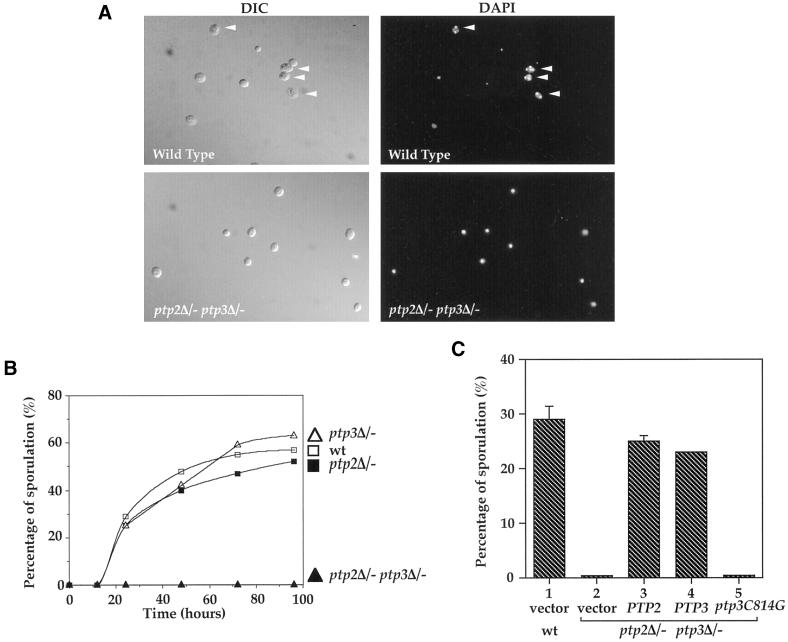Figure 1.
Diploid ptp2Δ/−ptp3Δ− double disruption cells are defective in sporulation. (A) PTP2 and PTP3 genes are required for sporulation. Wild-type (Y264, top) or ptp2Δ/− ptp3Δ/− double deletion diploid (Y164, bottom) cells were sporulated in liquid sporulation media for 2 d. Cells were fixed, stained with DAPI, and examined by Normaski phase-contrast microscopy for spores (left panels) or fluorescence microscopy for DAPI-stained nuclei (right panels). A high proportion of wild-type cells have formed asci with a triad or tetrad of spores visible (top left panel, arrowheads) and these asci containing bi-, tri-, and tetranuclei (top right panel, arrowheads). No mature spores were found in ptp2Δ/− ptp3Δ/− double deletion cells, and most of the cells only contain a single nucleus (lower right panel). (B) Defective sporulation in ptp2Δ/− ptp3Δ/− double deletion cells but not single deletion of either phosphatase gene. Wild-type (Y264, open square), ptp2Δ/− (Y162, closed square), ptp3Δ/− (Y163, open triangle), or ptp2Δ/− ptp3Δ/− (Y164, closed triangle) cells from liquid sporulation at the indicated time points were examined by phase-contrast microscopy. The percentage of sporulation was determined by counting the numbers of asci containing four mature spores. (C) Ptp3 Tyr-phosphatase activity is required for its function in sporulation. Wild-type (Y264, column 1) or ptp2Δ/− ptp3Δ/− cells (Y164, column 2) harboring vector, single-copy PTP2 (pXZ223, column 3), PTP3 (pXZ209, column 4), or ptp3C814G (pXZ210, column 5), which encodes a catalytic-deficient phosphatase, were shifted to sporulation medium, and the sporulation efficiency was determined by counting the number of sporulated cells.

